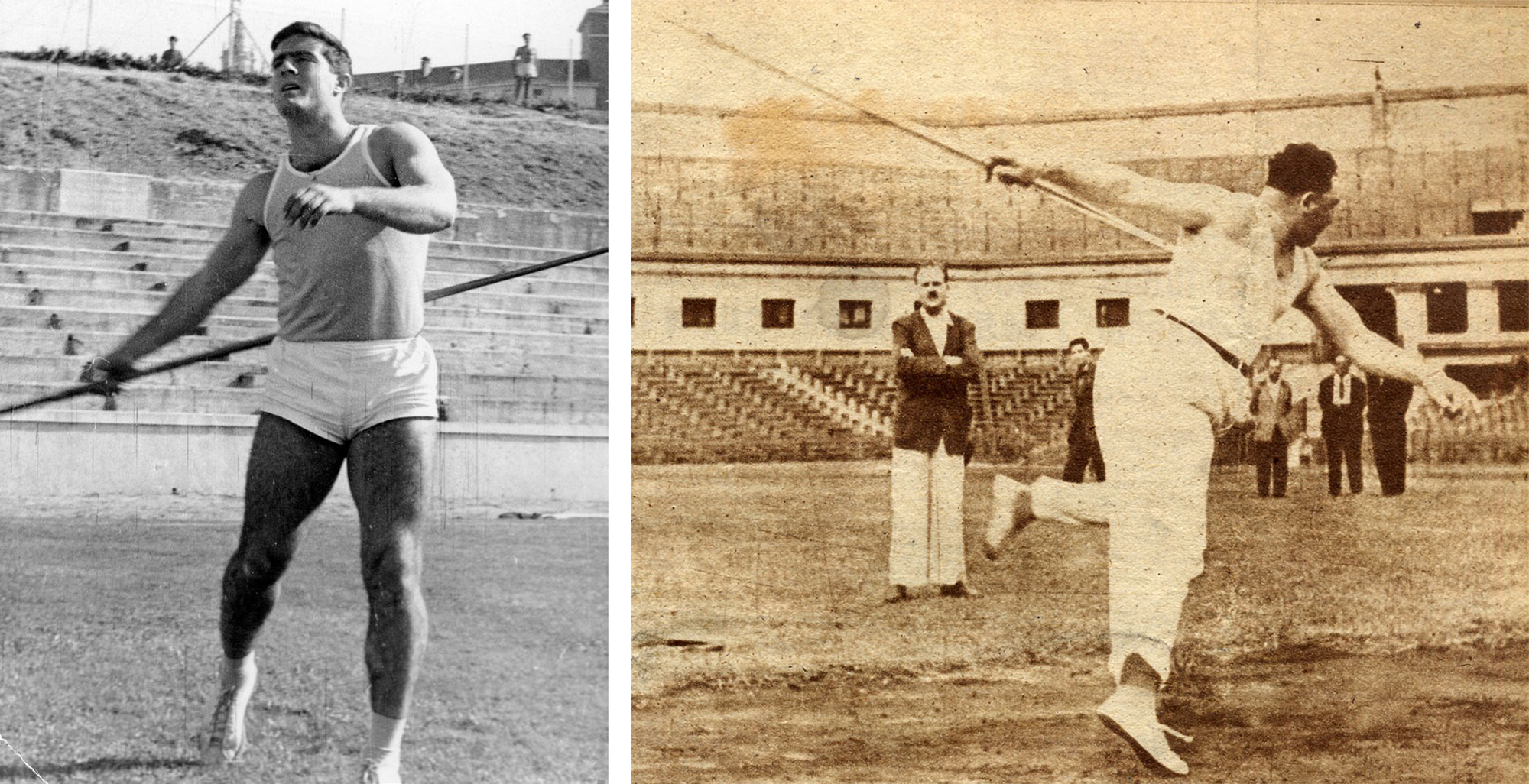
- Madrid, 21 September 1956. The athlete Miguel de la Quadra-Salcedo Gayarre (1932-2016) sent the javelin at 82.80 meters, breaking the world brand of 81.20 meters of Erik Daniels. But the Basque athlete – although born in Madrid, it was considered Basque, half Biscayan and half Navarro – was also going to destroy the world record by reaching 112 metres. To do so, he released javelin in the form of a “Basque”; some called him “pastor technique”, or “Erauskin technique”, in honor of the inventor, and some media of the time also called him “Spanish technique”.

In 2004 Miguel de la Quadra-Salcedo explained in an interview by Amets Arzallus in ARGIA the details of the special technique. “My friend of Ermua, Félix Erauskin, told me the technique that shepherds used to care for sheep. They threw small hazelnuts in a special style.” The son of Cecilio Erauskin, pastor of the Gorbea, Félix Erauskin (1907-1987), was also a youth pastor. Like Miguel de la Quadra Salcedo, he excelled in athletics in launching tests, winning 19 times the Spanish championship in different modalities. “By casting it, they allowed it to slip into their hands and so it moved much further away from the stick.” Thus, the launcher wet his hand with soap or water to make it easier for the javelin to slip; in the launch tests it is done backwards and use magnesium to prevent slippage.
But Miguel was not the first to use this technique in javelin, but he also saw for the first time his friend Felix Erauskin. Erauskin knew the levers technique perfectly, as he had already broken 8 times the record of the Basque rod
“But it was not my only technique, I add to this style the Basque rod technique. My family was from the Commissions, from Somorface. There, with some bars, the levers, they made the hole and pulled out the ore. Occasionally. Among those who worked, they played championships to see who pulled the bar further. That was the Euskaldun bar. And his technique was that by casting the bar, it was three turns in itself so that the centrifugal force could be transformed into linear force on the road,” as is the case today with the release of hammers. Therefore, this technique that De la Quadra-Salcedo trained in summer on Hendaia Beach was, in addition to “pastor”, “minero”.
But Miguel was not the first to use this technique in javelin, but he also saw for the first time his friend Felix Erauskin. Erauskin knew the levers technique perfectly, as he had already broken 8 times the Basque bar record and won 19 times the Bizkaia championship. In 1956 he demonstrated for the first time in the stadium of Montjuic in Barcelona his innovative way of testing javelin. He was then 48 years old, and soon after, on September 21, the 24-year-old Quadra-Salcedo used the Erauskin style to break all brands.
But by the end of 1956, the International Athletics Federation banned the use of this technique at the Melbourne Olympic Games, because of its dangerousness, because with this technique of turning and sliding the javelin could escape anywhere. Then he adapted the technique: “First they wrote that the javelin didn’t have to turn around and without it he threw it at 95 meters.” Enough to break the world record. But still the javelin made a small spin, which was also banned in other regulations: the tip of the javelin had to look at all times. “There I was amazed.” Therefore, De la Quadra-Salcedo did not break any rules, but modified them later, which was sufficient to override the brands obtained previously. The 112 meter mark would remain the world record, as the best brand is 98.48 meters since 1996.
But in the end this technique served the adventurer Miguel de la Quadra-Salcedo. “It had a great status among the Amazon Indians. That status was never a target, I had the best food, the best hammock, the best fire, all thanks to the javelin, because I pushed it further away.” The International Athletics Federation recognized him what he denied him.